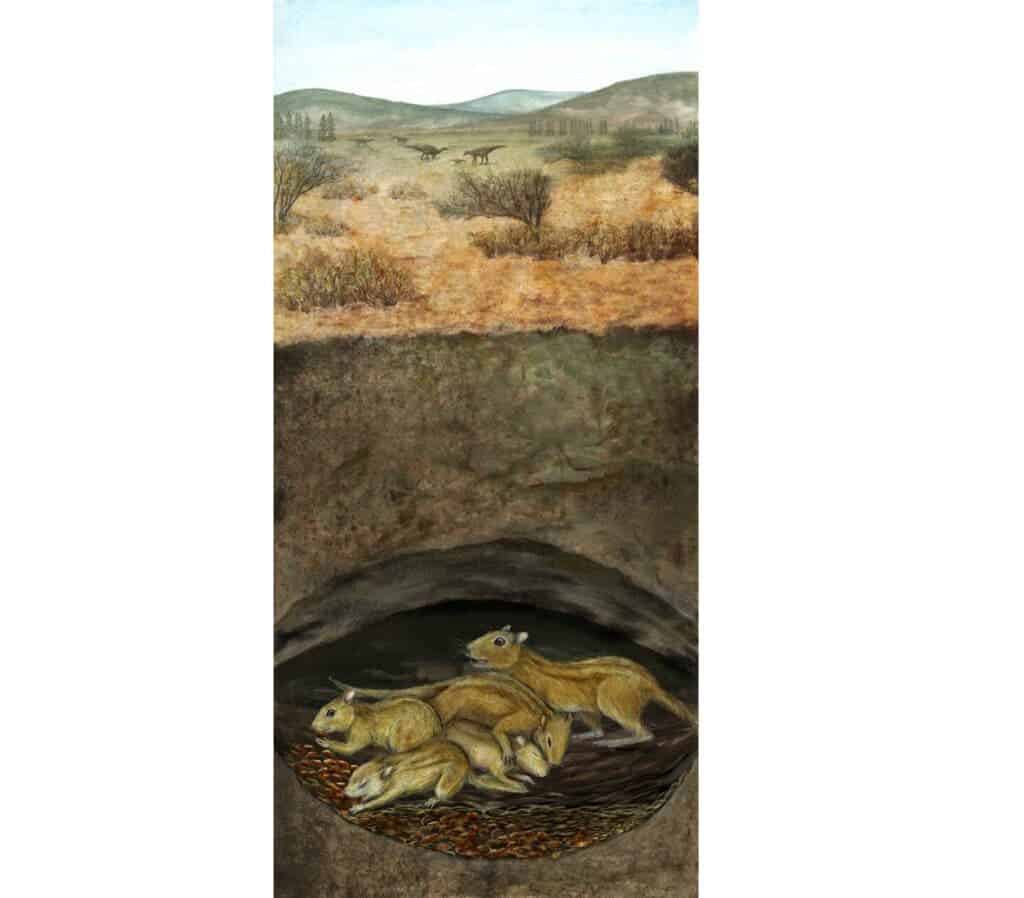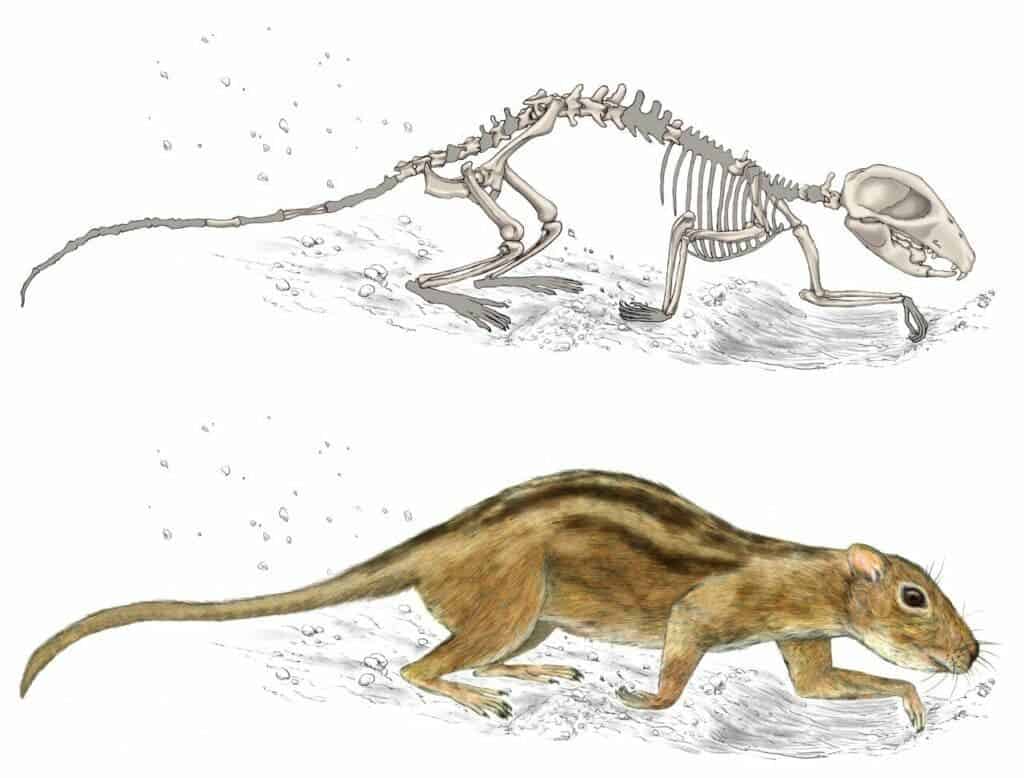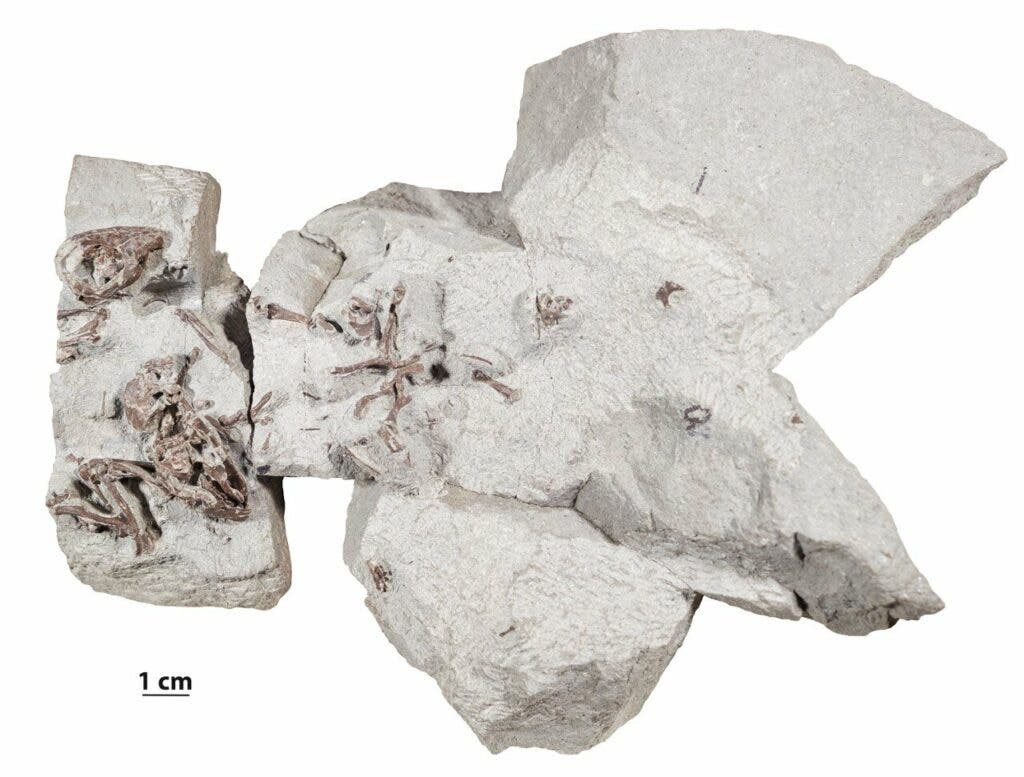
Virtually all mammals show some degree of social behavior, however infrequent their contact with other members of their own species. One may say this is a defining feature of our taxa, with humans being a prime example. According to a new study, mammals have mingled with one another since at least 75 million years ago, while the Earth was still dominated by the dinosaur lineage. Previously, scientists used to think mammals first exhibited social behavior after dinosaurs went extinct.
“It was crazy finishing up this paper right as the stay-at-home orders were going into effect—here we all are trying our best to socially distance and isolate, and I’m writing about how mammals were socially interacting way back when dinosaurs were still roaming the Earth!” said lead author Luke Weaver, a graduate student in biology at the University of Washington. “It is really powerful, I think, to see just how deeply rooted social interactions are in mammals. Because humans are such social animals, we tend to think that sociality is somehow unique to us, or at least to our close evolutionary relatives, but now we can see that social behavior goes way further back in the mammalian family tree.”
Weaver and colleagues at the University of Washington and Burke Museum examined the fossil skulls and skeletons of 22 individuals of Filikomys primaevus, a small, rodent-like mammal whose name aptly translates to ‘youthful, friendly mouse.’ F. primaevus belonged to the extinct taxon of rodent-like mammals known as multituberculata, which existed from about 178 million to 50 million years ago.
“Multituberculates are one of the most ancient mammal groups, and they’ve been extinct for 35 million years, yet in the Late Cretaceous they were apparently interacting in groups similar to what you would see in modern-day ground squirrels.”

The fossils were found clustered together in groups of two to five individuals, with at least 13 individuals found within a 30 square-meter area in the same rock layer at Egg Mountain, a famous dinosaur nesting site in western Montana. The ancient mammals were found in a mixture of multiple mature adults and young adults, suggesting that these groups weren’t simply parents raising their young but rather the social members of a pack.

Strong shoulders and elbows suggest that F. primaevus were likely burrowing animals that nested together in the caverns they built.
Up until now, scientists used to think that social behavior in mammals first emerged long after the dinosaurs went extinct, and mostly in animals in the Placentalia group — a rather diverse group, with nearly 4000 described species alive today including such diverse forms as whales, elephants, shrews, and humans.
However, the new findings show that social behavior was likely present well within the age of dinosaurs, and in an entirely different, more ancient group of mammals to boot.
“These fossils are game changers,” said senior author Gregory Wilson Mantilla, a University of Washington professor of biology and curator of vertebrate paleontology at the Burke Museum. “As paleontologists working to reconstruct the biology of mammals from this time period, we’re usually stuck staring at individual teeth and maybe a jaw that rolled down a river, but here we have multiple, near-complete skulls and skeletons preserved in the exact place where the animals lived. We can now credibly look at how mammals really interacted with dinosaurs and other animals that lived at this time.”
The findings appeared in the journal Nature Ecology & Evolution.









